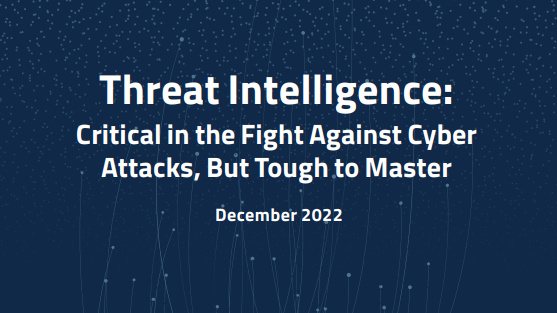LoJax rootkit used by Russian-linked Fancy Bear has been silently active since 2016
Researchers question what the malware was used to accomplish before being first exposed last year


Researchers have discovered that LoJax, the malware that formed the foundation for devastating Fancy Bear attacks in 2018, has been silently active for years.
Use of this infrastructure by the Russian-linked hacking group was exposed in September 2018, just a few months after the LoJax servers were first discovered by security researchers in May.
LoJax was last year found to be incorporated as part of a Fancy Bear Unified Extensible Firmware Interface (UEFI)-based rootkit, which meant LoJax was resistant to hard drive replacements and operating system re-installs.
But a NETSCOUT team of ASERT security researchers have found that LoJax may have been alive in the wild since 2016, by tracing its fingerprint, also learning there still remains two active command and control (C2) servers.
"Continued diligence in tracking activity related to LoJax proved that the actors still maintain live C2 servers," the researchers summarised in a blog post.
"They may also have additional ongoing operations outside the 'in the wild' use reported by ESET activity. Even with all of the publicity around Lojax, Fancy Bear operations did not take the publicly disclosed servers offline.
"Because these C2 servers have a long shelf life, organizations should ensure they incorporate the IOCs [indicators of compromise] into their defensive posture. This longevity underscores the importance that LoJax C2s remain in active defense postures for longer periods of time."
Get the ITPro daily newsletter
Sign up today and you will receive a free copy of our Future Focus 2025 report - the leading guidance on AI, cybersecurity and other IT challenges as per 700+ senior executives
The team used intelligence gathered from a known LoJax C2 server to build a network-scanning fingerprint. They used this to search for additional LoJax servers, and discovered seven in late-2018. Of these seven, two were subsequently deemed to still be active.
The researchers used DNS records to cross-reference the servers with known LoJax samples, and found the LoJax C2 server had ties to two domains, regvirt.com and elaxo.org.
NETSCOUT determined when LoJax first became active by examining domain registration information for when confirmed and suspected domains first came online. Beyond a minor flurry in 2004 and 2006, the cyber security firm detected a massive spike in late 2016.
The findings raise questions as to what the LoJax infrastructure was used to accomplish, and how successful it was before it was first publicly-exposed in 2018. Moreover, NETSCOUT says the rootkit doesn't look like an isolated incident or one-off attack aimed at a specific group of targets.
An ASERT security researcher told IT Pro the LoJax domain names were likely picked to blend in as best they can with a target organisation's network traffic, and were not necessarily mapped to an organisation's sector.
"Why an organization might be targeted varies as the priorities may shift during the course of an operation, but in general Lojax makes for a good beacon for device tracking along with executing code sent by the command and control server," they said.
"Fancy Bear remains highly active in the cyber landscape. Regardless, if the business is the primary target of the actor or not, the business may still be targeted due to their connections. Businesses should remain vigilant against cyber-attacks and in particular phishing attempts which account for the majority of network compromises."
The infamous Russian hacking group previously used the LoJax rootkit to breach and seize control of government systems in September last year. The same rootkit is also claimed to be part of a campaign run by the Sednit group against high-profile targets in Central and Eastern Europe.

Keumars Afifi-Sabet is a writer and editor that specialises in public sector, cyber security, and cloud computing. He first joined ITPro as a staff writer in April 2018 and eventually became its Features Editor. Although a regular contributor to other tech sites in the past, these days you will find Keumars on LiveScience, where he runs its Technology section.
-
 Should AI PCs be part of your next hardware refresh?
Should AI PCs be part of your next hardware refresh?AI PCs are fast becoming a business staple and a surefire way to future-proof your business
By Bobby Hellard Published
-
 Westcon-Comstor and Vectra AI launch brace of new channel initiatives
Westcon-Comstor and Vectra AI launch brace of new channel initiativesNews Westcon-Comstor and Vectra AI have announced the launch of two new channel growth initiatives focused on the managed security service provider (MSSP) space and AWS Marketplace.
By Daniel Todd Published
-
 Three ways to evolve your security operations
Three ways to evolve your security operationsWhitepaper Why current approaches aren’t working
By ITPro Published
-
 Beat cyber criminals at their own game
Beat cyber criminals at their own gameWhitepaper A guide to winning the vulnerability race and protection your organization
By ITPro Published
-
 Quantifying the public vulnerability market: 2022 edition
Quantifying the public vulnerability market: 2022 editionWhitepaper An analysis of vulnerability disclosures, impact severity, and product analysis
By ITPro Published
-
 Same cyberthreat, different story
Same cyberthreat, different storyWhitepaper How security, risk, and technology asset management teams collaborate to easily manage vulnerabilities
By ITPro Published
-
 Business value of ServiceNow security operations
Business value of ServiceNow security operationsWhitepaper Experience transformational gains from automating workflows and data-sharing among IT, security, and risk teams to rapidly remediate threats
By ITPro Published
-
 Cybercriminals are resilient. How about you?
Cybercriminals are resilient. How about you?Whitepaper Stay ahead of those agile bad actors
By ITPro Published
-
 Threat Intelligence: Critical in the fight against cyber attacks, but tough to master
Threat Intelligence: Critical in the fight against cyber attacks, but tough to masterWhitepaper Discover why many claim Threat Intelligence is extremely important in protecting their company and data
By ITPro Published
-
 State of ransomware readiness 2022
State of ransomware readiness 2022Whitepaper Reducing the personal and business cost
By ITPro Published